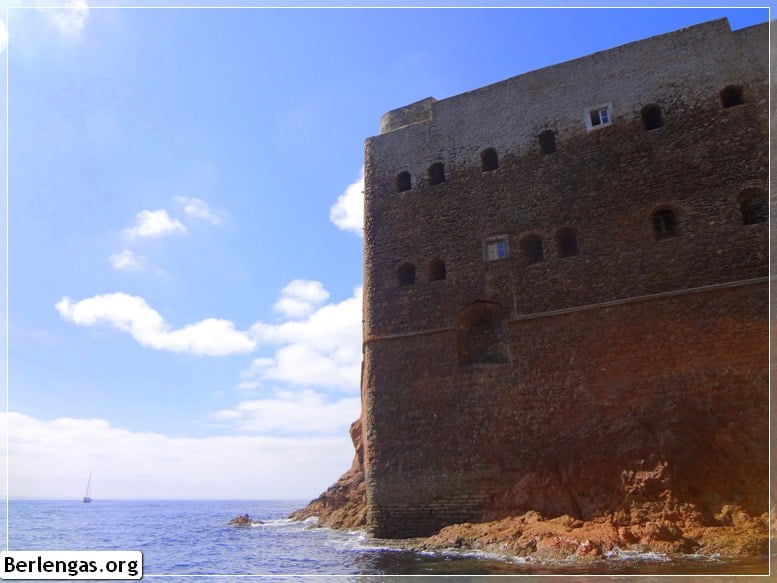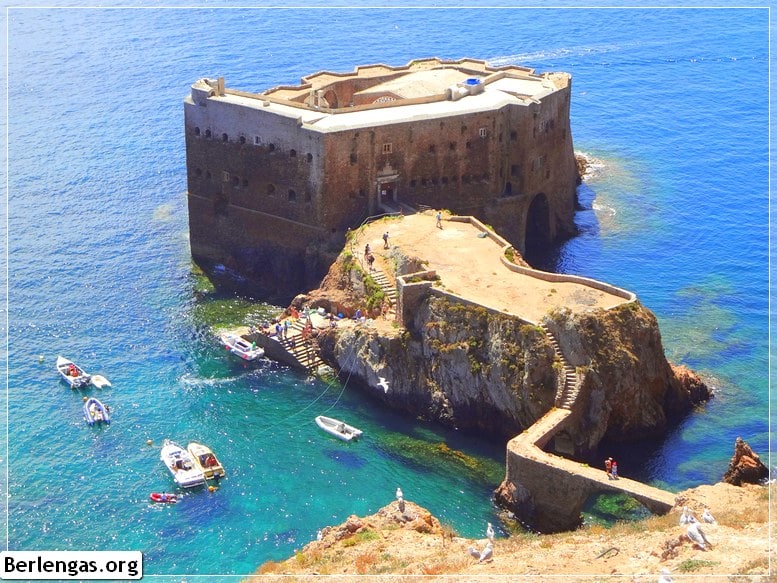Index
The Berlengas Islands have had a human presence since 1000 BC and were a very important place on the Atlantic Sea Route, which connected the south and north of the European continent.
These waters sailed Phoenician and Roman civilizations, and later when the Portuguese sailed around the world in search of new territories.
During the fifteenth century, it was a place of great interest to the Portuguese royalty for rabbit hunting. For this reason, D. Afonso V declared this small archipelago a protected area, prohibiting any harmful action on wildlife. Present there.
In this same century, a group of fishermen settled on this island. A monastery of the Jerónima Order was built, in the current Bairro dos Pescadores, in the 16th century, in which the monks were always at the service of religion, helping passing crews.
Unfortunately, being very isolated, it was the target of many attacks by various European and African peoples, which led to the end of the religious activity of this monastery. Today, on the grounds of the sanctuary, Camping Park is ranked as one of the best in Europe.


Mercy Monastery
At the beginning of the 16th century, a monastery was built in Berlenga at the behest of D. Manuel. It was active between 1513 and 1548 and consisted of a chapel, patio, cells for monks, cistern, refectory, dormitory, and an orchard where the religious produced fresh food.
The life of the monks of the order of Saint Jerome was difficult. The constant attacks by pirates and corsairs and the unsanitary conditions of life forced the abandonment of the monastery.
This became a ruin and was gradually dismantled, especially after the proclamation of D. João IV, which determined the use of materials from the monastery to build a series of defensive notifications in Berlenga.
Today, there are few traces of the monastery. Much of the stone used in its structure was reapplied in the construction of the São João Baptista fort São João Baptista and Castelinho.
The King of Berlengas (1978)
The strong presence of the Berlengas archipelago in the Portuguese collective imagination inspired the making of the film O Rei das Berlengas, made in 1978 by Artur Semedo.
The story takes place in the times that followed the revolution of April 25, 1974, when one of D. Lucas de Midões decided to take advantage of the installed chaos to proclaim the independence of the Berlengas.
The film is a foray into the burlesque area, even bringing to the viewer a satire that delves into history to paint the independent tendencies of the non-existent population of the archipelago.
The Teles de Midões reigned on the islands when D. Afonso Henriques managed to incorporate the archipelago into the kingdom of Portugal through unrealistic maneuvers. Since then, the Teles de Midões family has successively tried to regain independence, having invariably been betrayed for history.
In the center of the action, always the actor Mário Viegas, changing according to the Teles de Midões in question, in a spiral of madness that includes the support of Asterix and Obelix for the achievement of national independence and the creation of a horse of Troy to try to recover the Berlengas.
The film, which has the full name O Rei das Berlengas or Independência das Ditas, lasts 115 minutes and features the actors Mário Viegas, Isabel de Castro, Artur Semedo, Joaquim Letria, Paula Guedes, Maria Albergaria, Elisa Gisette, Helena García Fue produced by the Portuguese Film Institute, based on an original idea by Artur Semedo, Joaquim Letria, and Mário Viegas. Raul Ferrão wrote the music.
ICNF and Municipality of Peniche
The Berlengas archipelago will be administered jointly by INCF – Institute for the Conservation of Nature and Forests and the Municipality of Peniche Municipio de Peniche.
This new way of treating and managing this area makes the Municipality of Peniche, and its population actively contribute to projects for this place’s protection, development, and tourism continuity.
As the Secretary of State for Nature Conservation, Forestry, and Spatial Planning said:
“We want the people who live in these places and who have maintained and preserved these territories over the years to have a say in the management’s decision.”
